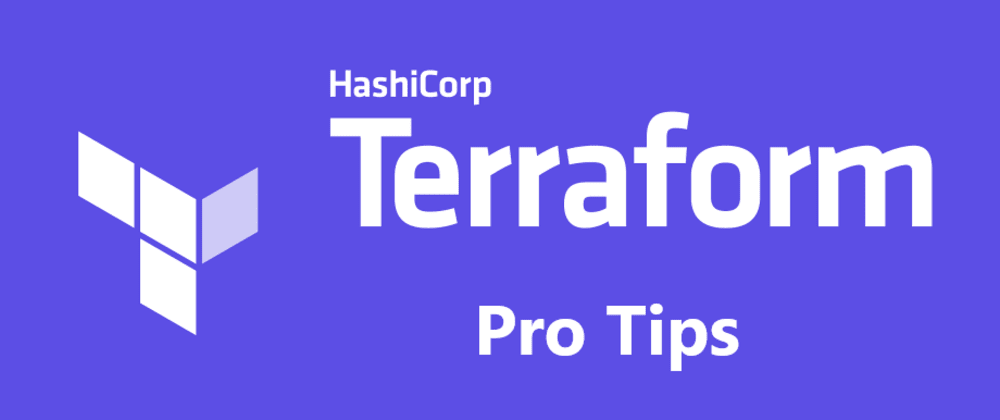Overview
This tutorial uses examples from the following GitHub project: Azure Terraform Deployments.
In todays tutorial we will look at an interesting use case example whereby we will be creating a dynamic Terraform variable using locals and a for loop.
Let's take a moment to talk about the use case before going into the code. We will use Terraform to build the following:
- Resource Group
- Virtual network
- App Service Plan
- App Insights
- VNET integrated App Service
- Azure Container Registry (ACR)
Some Azure PaaS services (such an ACR) has networking features called Firewalls and Virtual networks which gives us the ability to configure allowed public network access where we can define Firewall IP whitelist rules or allow only selected networks access, in order to limit network connectivity to the PaaS service.
By default an ACR is public and accepts connections over the internet from hosts on any network. So we will as part of the Terraform configuration restrict all network access to the ACR and use the Firewall IP whitelist to only allow the outbound IPs of our VNET integrated App service. In addition we will also provide a list that contains custom IP ranges we can set which will represent the on premises public IPs of our company to also be included on the Firewall IP whitelist of the ACR.
IMPORTANT: ACR network_rule_set_set can only be specified for a Premium Sku.
Since we are building all of this with IaC using Terraform the question is how can we allow all the possible outbound IPs of our VNET integrated App Service to be whitelisted on the ACR if the outbound IPs of the App Service will not be known to us until the App Service is deployed?
This is where I will demonstrate how we can achieve this using Dynamic Variables to dynamically create the IP whitelist we can use using locals.
App Service (VNET integrated)
In the following demo configuration. Let's take a closer look at the App service configuration and VNET integration:
NOTE: All the code samples used in this tutorial are updated to use the the latest version of the AzureRM provider 3.0.
App Service resource (appservices.tf)
## appservices.tf ##
resource "azurerm_linux_web_app" "APPSVC" {
name = var.appsvc_name
location = azurerm_resource_group.RG.location
resource_group_name = azurerm_resource_group.RG.name
service_plan_id = azurerm_service_plan.ASP.id
https_only = true
identity {
type = "SystemAssigned"
}
site_config {
container_registry_use_managed_identity = true
ftps_state = "FtpsOnly"
application_stack {
docker_image = "${var.acr_name}.azurecr.io/${var.appsvc_name}"
docker_image_tag = "latest"
}
vnet_route_all_enabled = var.vnet_route_all_enabled
}
app_settings = lookup(local.app_settings, "linux_app_settings", null)
}
VNET integration resource (appservices.tf)
NOTE: Outbound IPs will only become available once the VNET integration resource has been created.
## appservice.tf ##
resource "azurerm_app_service_virtual_network_swift_connection" "azure_vnet_connection" {
count = var.vnet_integ_required == true ? 1 : 0
app_service_id = azurerm_linux_web_app.APPSVC.id
subnet_id = azurerm_subnet.SUBNETS["App-Service-Integration-Subnet"].id
}
Azure Container Registry (ACR) resource (acr.tf)
## acr.tf ##
resource "azurerm_container_registry" "ACR" {
name = var.acr_name
location = azurerm_resource_group.RG.location
resource_group_name = azurerm_resource_group.RG.name
sku = var.acr_sku
admin_enabled = var.acr_admin_enabled
dynamic "identity" {
for_each = var.acr_requires_identity == true ? [1] : []
content {
type = "SystemAssigned"
}
}
dynamic "georeplications" {
for_each = var.acr_sku == "Premium" ? var.acr_georeplications_configuration : []
content {
location = georeplications.value.location
zone_redundancy_enabled = georeplications.value.zone_redundancy_enabled
}
}
network_rule_set = [
{
default_action = var.acr_network_rule_set_default_action
ip_rule = [for each in local.acr_ip_rules :
{
action = each["action"]
ip_range = each["ip_range"]
}
]
virtual_network = [for each in local.acr_virtual_network_subnets :
{
action = each["action"]
subnet_id = each["subnet_id"]
}
]
}
]
}
As you can see from the above resource block that is building out the ACR notice the attribute called network_rule_set:
## acr.tf ##
## Need Premium SKU to use the following config ##
network_rule_set = [
{
default_action = var.acr_network_rule_set_default_action
ip_rule = [for each in local.acr_ip_rules :
{
action = each["action"]
ip_range = each["ip_range"]
}
]
virtual_network = [for each in local.acr_virtual_network_subnets :
{
action = each["action"]
subnet_id = each["subnet_id"]
}
]
}
]
You will note that in network_rule_set we are using for loops on local values called local.acr_ip_rules and local.acr_virtual_network_subnets. We are also using a variable to declare the default action default_action = var.acr_network_rule_set_default_action which is set to "Deny".
Lets take a look at the local.tf file in more detail:
Locals (local.tf)
Notice the locals variables called allowed_ips, local.acr_ip_rules and local.acr_virtual_network_subnets:
## ACR Firewall rules ##
#Get all possible outbound IPs from VNET integrated App services and combine with allowed On Prem IP ranges from var.acr_custom_fw_rules
allowed_ips = distinct(flatten(concat(azurerm_linux_web_app.APPSVC.possible_outbound_ip_address_list, var.acr_custom_fw_rules)))
acr_ip_rules = [for i in local.allowed_ips :
{
action = "Allow"
ip_range = i
}
]
acr_virtual_network_subnets = [
{
action = "Allow"
subnet_id = azurerm_subnet.SUBNETS["App-Service-Integration-Subnet"].id
}
]
Let's take a closer look at allowed_ips first:
## local.tf ##
allowed_ips = distinct(flatten(concat(azurerm_linux_web_app.APPSVC.possible_outbound_ip_address_list, var.acr_custom_fw_rules)))
This locals variable uses a few Terraform functions and I will explain each function separately.
The first function is called concat(). The concat function will combine two or more lists into a single list. As you can see from the values in the brackets, we are taking the output from the App service (APPSVC) we created earlier, called possible_outbound_ip_address_list and combining it with a variable (list) called var.acr_custom_fw_rules.
concat(azurerm_linux_web_app.APPSVC.possible_outbound_ip_address_list, var.acr_custom_fw_rules)
Here is the variable we can expand on manually if needed:
## variables.tf ##
variable "acr_custom_fw_rules" {
type = list(string)
description = "Specifies a list of custom IPs or CIDR ranges to whitelist on the ACR."
default = null
}
## config-dev.tfvars ##
acr_custom_fw_rules = ["183.44.33.0/24", "8.8.8.8"]
So the end result of our function: concat(azurerm_linux_web_app.APPSVC.possible_outbound_ip_address_list, var.acr_custom_fw_rules) will give us one list of our custom IPs and IP ranges, combined with the list of possible outbound IPs from the App service we are building.
The next function is called flatten(). This function will just flatten any nested lists we combined using concat, into a single flat list:
flatten(concat(azurerm_linux_web_app.APPSVC.possible_outbound_ip_address_list, var.acr_custom_fw_rules))
The last function is called distinct(). This function will just remove any duplicate IPs or ranges. (The distinct() function is handy if we are building more than one app service and want to combine all the IPs of all the App services, and remove any the duplicate IPs from our final list.)
distinct(flatten(concat(azurerm_linux_web_app.APPSVC.possible_outbound_ip_address_list, var.acr_custom_fw_rules)))
Let's take a closer look at acr_ip_rules next:
## local.tf##
acr_ip_rules = [for i in local.allowed_ips :
{
action = "Allow"
ip_range = i
}
]
If you remember the attribute network_rule_set we created on our acr.tf resource config earlier, we need to specify a nested attribute called ip_ruleand the default action is set to "Deny", but if you see the ip_rule value, we are using a for loop to construct a dynamic rule set based on the value of our local.acr_ip_rules:
## acr.tf ##
ip_rule = [for each in local.acr_ip_rules :
{
action = each["action"]
ip_range = each["ip_range"]
}
]
This loop will dynamically create an "Allow" entry on our ACR firewall for each outbound IP of our App service, as well as the custom IPs/ranges we added via our custom variable called var.acr_custom_fw_rules.
As you can see from this tutorial, we can secure our public ACR using Firewall rules that are dynamically created by only allowing our App services and On premise IPs/ranges to connect into our ACR.
I hope you have enjoyed this post and have learned something new. You can also find the code samples used in this blog post on my GitHub page. ❤️
Author
Like, share, follow me on: 🐙 GitHub | 🐧 Twitter | 👾 LinkedIn












Latest comments (0)